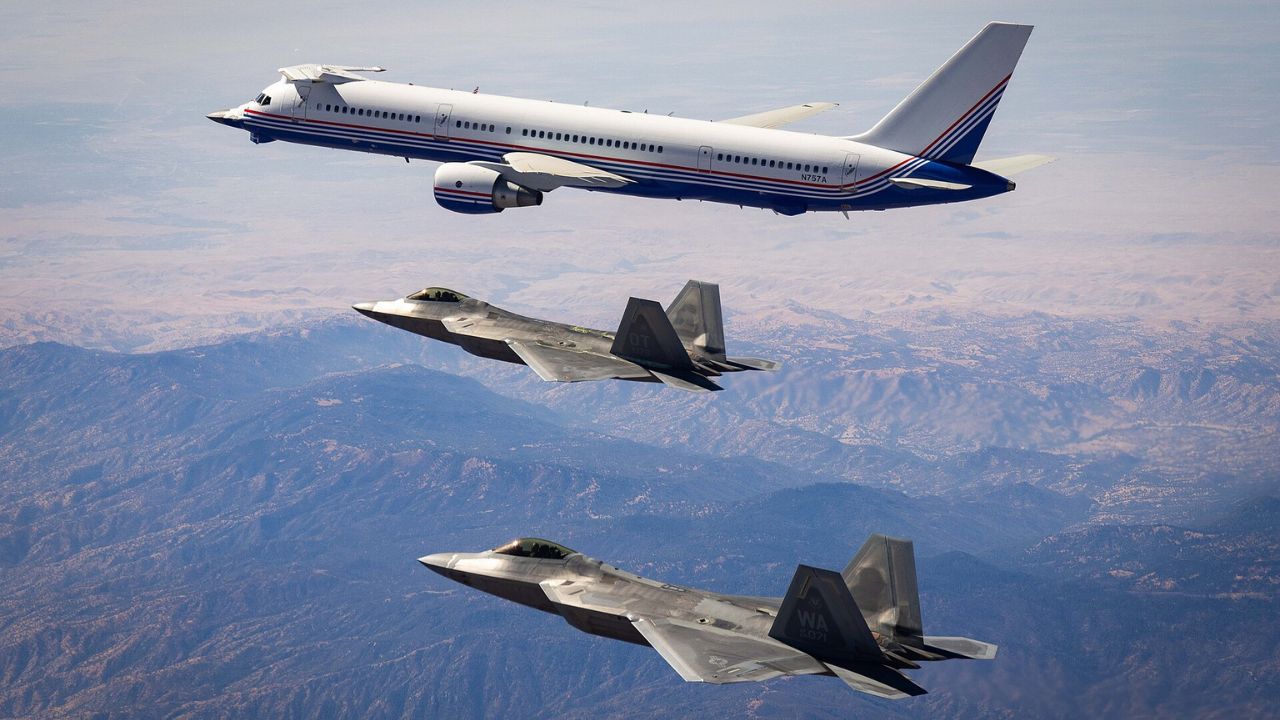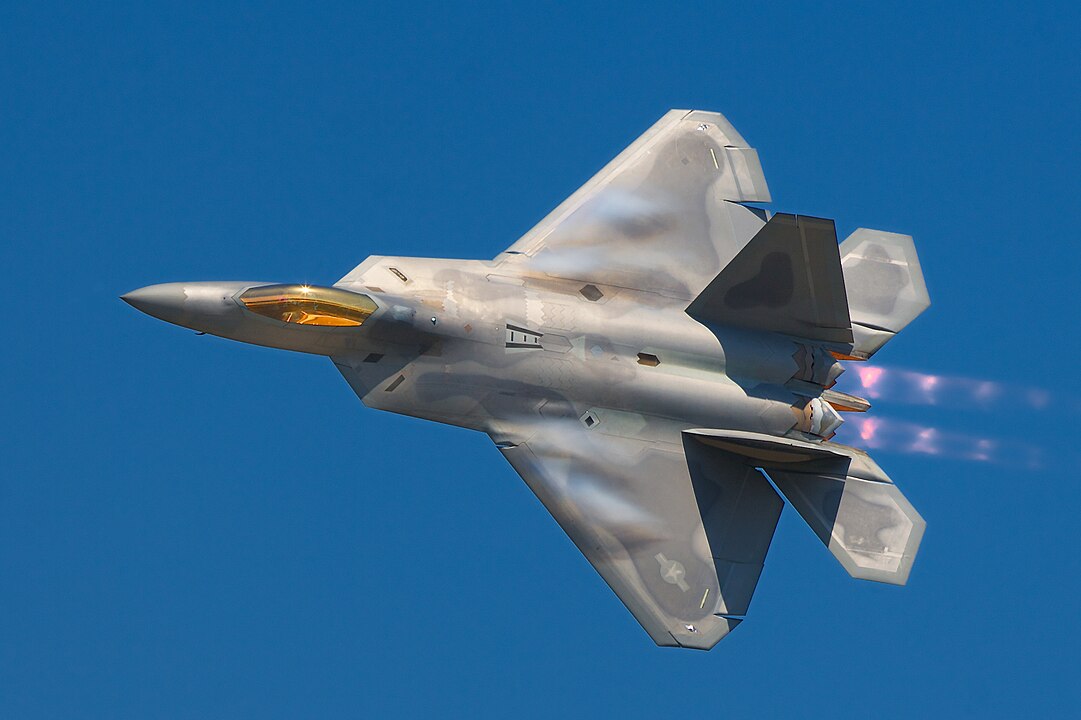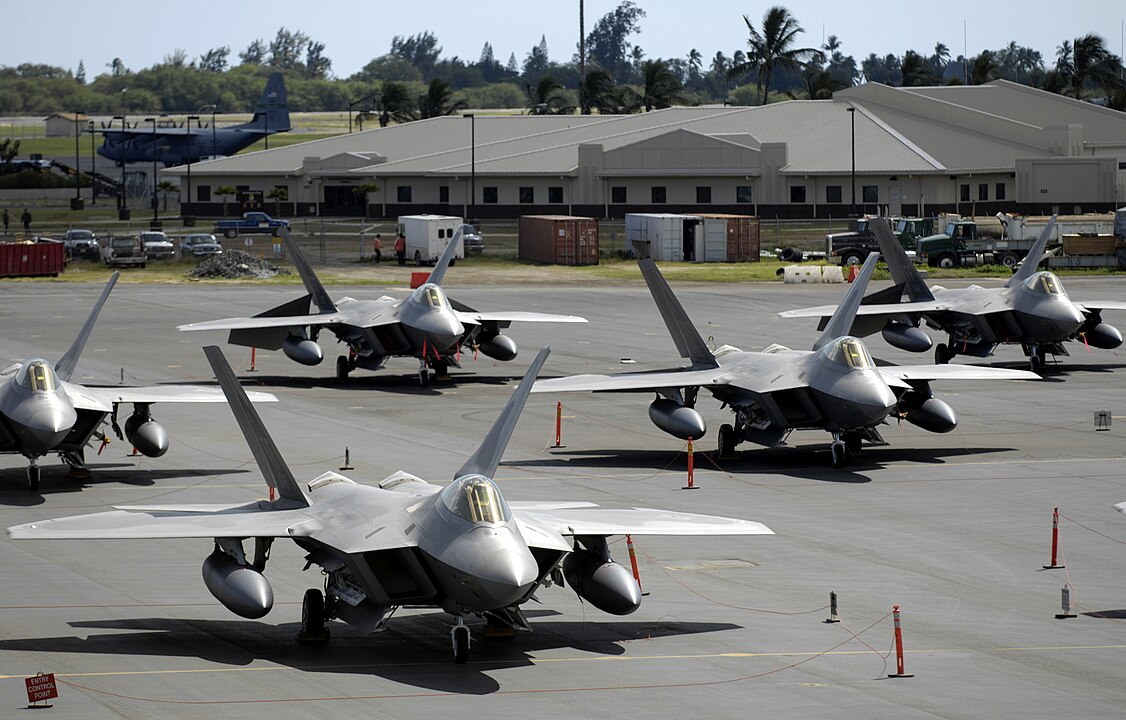If you had to explain air dominance with a single airplane, you would point to the F-22. It is the jet that slips into dangerous airspace, sees first, and decides the fight before opponents even realize what happened. Pilots talk about it like a system, not a shape. Stealth, speed, and sensors merge in the cockpit, then the pilot uses that edge to shape the sky for everyone else.
The Raptor’s status did not arrive the day it entered service in 2005. It grew from engineering choices that still matter, from real missions that proved the design, and from a new push to expand the combat-ready fleet by upgrading older aircraft. Put those pieces together and you can see why the name “Raptor” still carries weight.
A jet that rewrote the playbook

Start with stealth. The F-22’s angles and coatings shrink what enemy radars can see. Less signature means more time. Time to choose when to engage, or to slide past a threat and hold the high ground for the rest of the force. Air Force fact sheets put it plainly. The airframe and engines are built to survive where fourth-generation fighters would struggle.
Speed is the multiplier. The Raptor can supercruise, which means it flies supersonic without afterburner. That saves fuel and keeps a patrol moving quickly across a wide area. If a formation expands or a pop-up threat appears, the pilot does not have to trade range for speed just to get to the merge.
Sensors tie the package together. The APG-77 radar, electronic support measures, and secure data links let a Raptor track many targets quietly. The jet turns a messy picture into a clear one, then shares that picture with teammates. Air and Space Forces Magazine describes this as a first-shot, first-kill mindset rather than a single trick. The airplane is fast and stealthy, but the fused view is what keeps you ahead.
None of that matters without crews who can use it. Tactics evolved with the airplane. Raptor flights learn how to manage emissions, hand targets to other jets, and collapse a fight before the other side can organize. That approach moved from briefing slides into real skies a decade ago.
Proof in the real world
The F-22’s first combat came over Syria in September 2014. The aircraft did more than escort. It struck targets, managed a crowded air picture, and set the tone for follow-on waves. Department of Defense briefings at the time underscored a simple fact. The jet’s combat record started that night, not just its test record.
A very public moment arrived in February 2023. An F-22 shot down a high-altitude balloon off South Carolina, then Raptors took part in follow-on shootdowns over Alaska and Canada. The images were everywhere. It was the first time many people heard the name outside an air show. The details were unusual, but the core ideas were familiar. Quick reaction, precise weapons, and a cockpit that makes tough timelines possible.
Most of the work is quieter. Raptors sit alert for homeland defense. They deploy to the Pacific and Europe for deterrence and training, then integrate with tankers, AWACS, and allied fighters. The airplane does not fly alone. It is the focus point for a team, and crews train to keep the whole team ahead of the threat.
Why it still sets the standard

The hardware was a leap, but the steady upgrades kept the edge sharp. A major modernization package known as Increment 3.2B integrated AIM-9X and AIM-120D missiles, strengthened electronic protection, and improved geolocation tools. Those changes widened angles for a clean shot and extended reach. They also changed how pilots fly the timeline, because better fusion and weapons open new windows.
Connectivity improved too. The jet began life with a stealth-preserving link for Raptor-to-Raptor sharing. Over time, gateways and receive modes expanded the picture, letting F-22 crews see more of what joint and allied aircraft see without giving away their position. The goal is simple. Keep the invisible airplane informed, so it can quietly control the geometry for everyone.
All of this takes maintenance and money, but the point is results. Crews still trust the jet to get them in, give them the first clear look, and give them the exit they want. That confidence is why the airplane became a symbol rather than a museum piece.
The fleet question, and the push to add jets
Here is where the reference story comes in. The Air Force’s combat-coded F-22 fleet is small, and about thirty older Block 20 aircraft have long been used for training. For several budget cycles, leaders floated retiring those older jets instead of upgrading them. Congress pressed pause and asked for a fuller analysis from the Government Accountability Office about what retirement or upgrades would mean for training, testing, and available combat tails.
In 2025, industry officials and defense reporters highlighted a different path. Rather than scrap the oldest Raptors, upgrade a portion so they can contribute in wartime. The number most often cited is roughly thirty-two airframes. These jets would not need every cutting-edge feature on day one. The idea is to bring them up to a standard that meaningfully increases the number of crews and aircraft available for a surge, while the next generation of fighters matures.
If that plan moves, the logic is straightforward. The F-22 will serve into the 2030s and likely beyond. A slightly larger combat-capable fleet buys time for the Air Force’s next-generation program to reach squadrons in real numbers. It also spreads training and test demand across more tails, which reduces pressure on the small group of modernized jets doing most of the work today.
What “air dominance” means in plain English

Air dominance does not mean the sky is empty. It means the other side cannot use the sky the way it wants. The Raptor helps create that condition. It makes enemy sensors back off. It breaks formations apart. It forces opponents to react instead of act. When a jet can do that day after day, crews call it dominant. When the public watches it do hard things on short notice, they call it a symbol.
If you are new to aviation, test any fighter against three questions. Can it get close without being seen. Can it take the first safe shot. Can it keep doing both as threats adapt. The Raptor’s long answer to those questions is why the name sticks. It set the baseline for a generation and, with upgrades and a possible fleet boost, it still wears the crown.
Sources
- U.S. Air Force Fact Sheet, “F-22 Raptor.” Greater than Mach 1.5 supercruise and core capabilities. September 2025. U.S. Air Force
- U.S. Department of Defense briefing, September 2014. Confirms the F-22’s first combat use over Syria. U.S. Department of War+1
- Reuters, February 2023. Accounts of the F-22 downing a high-altitude balloon off South Carolina. Reuters
- Government Accountability Office, June 2024. Analysis of proposed F-22 Block 20 divestment and upgrade options. Government Accountability Office+1
- The War Zone, September 2025. Reporting on plans to extend upgrades to older Block 20 Raptors. The War Zone
- Air & Space Forces Magazine, 2025 overview. Fleet status, modernization notes, and context for future replacements. airandspaceforces.com


